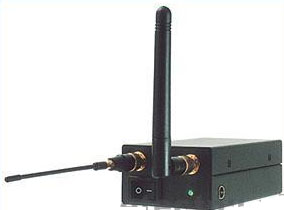Techniques, Technology and Counter-Counter-Measures
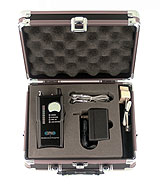
You need to know how to protect YOURSELF, since your security department or any consultant may not be truly aware of these threats and therefore not dependable. Since September 11th, a number of businesses entered the security field with little or no knowledge of the trade itself; only of its profit potential. Even outfits that have been around for some time and well-established have not been able to stay current with the latest innovations.
Realistically viewing your threat level has to be considered since everyone should expect some sort of impending privacy issue no matter how small. Thanks largely to the Internet you can arm yourself with much of the knowledge and equipment that the so-called experts use. If a respected agent in charge of solving computer crimes for the Secret Service in NYC had his T-Mobile Sidekick hacked, who knows what else happens out there to others in any business.
We'll start with acoustic ducting evaluation which is the inspection of air ducts, baseboard heaters, coffee rooms, lounges, bathrooms or any way the architecture of a building can transfer sound. A simple example is to put your ear to a wall and listen.

Basically anything that requires the use of the naked ear is called an acoustic bug. Softer surfaces can help muffle sounds but there are more efficient means out there. So be aware that the way an office site is designed can act as a conduit for conversations. Also, be aware of any changes as they can have adverse affects. Simply playing music can do wonders for masking conversations.
Inspection of telephone equipment and wiring is called line analysis. This is trickier than it seems since sometimes a possible weakness has an actual purpose to the telecommunication system. Especially if it requires constant maintenance and software upgrades.

All instruments should be opened and inspected. Ideally they should be compared with a known safe phone (a new telephone or device known to be free of bugs) or device. If you're not sure, just remove that piece of loose components and wiring and see if the phone still works. The wiring can be modified in a switch within the handset that essentially turns it into a microphone. If you bypass the hook switch, you can listen in from anywhere on the landline. Technical equipment won't be able to detect this. Time Domain Reflectometry is the sending of a pulse down a telephone line. If there is some sort of disruption; a wall outlet or wiretap; a portion of the pulse will be sent back to the device called a Time Domain Reflectometer (TDR). Then the time difference between the reflection and the continuous run is measured. This helps in determining the distance to the anomaly.

These devices can perform all sorts of diagnostics including mapping a wire network. That can be useful in locating a hidden phone. Hidden phones have several obvious uses such as making long distance phone calls to being placed in an office across the street to receive betting requests by bookies; a practice called back strapping. If you open up the modular jacks where you connect your phone, you'll usually see four wires. In most cases only two wires are connected; commonly known as ring and tip. If you see all four connected, be aware that is not usually consistent for most wiring situations, especially in homes. The other two wires could be used for a bugging device.
For instance, the microphone you use in a voice recorder can be cut in half. Connect the mike head to one set of unused wires anywhere on the phone wire. Then, so long as there are no breaks in the wire, connect the other end to the jack that connects to your recorder. Now place your recorder to be VOX (voice) activated and now you have an extremely reliable bug. By the way, this should be manually inspected for since using a specialized bug detector may see nothing wrong or inconsistent. A bug such as this that connects to a wire is called a direct tap.
The other general type is called an inductive tap: An inductive tap is accomplished by bringing a coil into the electro-magnetic field created by the current fluctuations during a telephone conversation. Current fluctuations similar to the target conversation are induced into the coil windings caused by this electro-magnetic field. These current fluctuations are amplified in order to recover the target conversations. Inductive taps are not particularly effective. However, a split/resplit inductive wiretap, using a highly sophisticated method, which is relatively unknown, produces excellent audio recovery.
Of all the known methods of wiretapping, this little known method is probably the safest from accidental detection or location by the telephone company and is therefore often used by professional eavesdroppers. This technique exploits the inductive properties of wire pairs within the same cable. The split/resplit wiretap is accomplished by rewiring the target telephone line to induce conversational audio into the eavesdroppers telephone line.
An inductive split/resplit wiretap can not be detected by any piece of equipment, other than a Time Domain Reflectometer (TDR). A TDR is the only instrument that will enable the TSCM (Technical Surveillance Counter-Measures) technician to reliably detect all wire irregularities, including split/resplit and bridge taps. This is when an instrument is outside a wire but can still distinguish what’s transacting over a wire. They are harder to detect since they don’t draw power from the line the way a standard telephone would. These are referred to as snuffle bugs This device is often used in conjunction with a transmitter or hard wired into a tape recorder. They are very difficult to detect as the device is not actually connected to the telephone wiring, but placed or clipped to the outside of a cable in a fashion similar to a small “bull dog” clip.). A simple probe used in hunting wire signals has a speaker, which can emit sounds. By accident one day I was working on an apartment intercom system while using a probe. I could hear conversations throughout the building quite clearly just through the intercom boxes mounted on walls from the master unit in the basement.
If you're using wireless headsets or cordless phones, the radio signals can be intercepted. A cordless phone acts like a radio, but depending on the frequency and a few other factors, can make interception extremely difficult. With some manufacturers, you can buy the same model as your neighbors or the office and have it join their phone system. Double check Caller ID boxes to see if they also record numbers dialed besides obviously those being received.
If you're using VOIP (Voice Over IP),
remember that calls can be recorded in a fashion identical to intercepting data between two computers.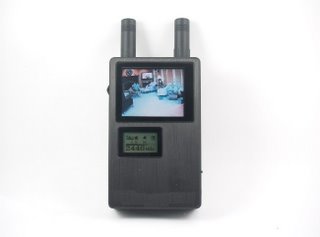
These packets of data can be reassembled into an audio file. Obviously electronic devices possess semiconductor components such as diodes, resistors and such. The method to hunt for these components is called Non-Linear Junction Detection (NLJD). 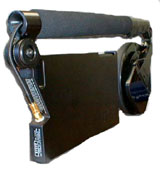 A Non Linear Junction Detector finds potential eavesdropping devices by flooding a suspect area or target with a spectrally pure microwave RF signal (usually around 888 or 915 MHz). Various frequencies are then monitored for a reflected harmonic signal. This becomes very useful when a bug is embedded in a picture frame or wall. The eavesdropping device doesn't have to be active for it to be discovered. If a device is active and transmitting wirelessly (or even on a wire), you can detect it with a Radio Frequency Spectrum Analyzer. (A spectrum analyzer processes an input signal to separate and measure the individual spectral components of the signal, and to order them according to their frequency.) Depending on the detection device used, you can determine whether voice, data or video is being sent, and possibly listen to the data. Try to use different sized antennas or buy one that collapses. Different frequencies can be detected more efficiently by using various sizes. The use of filters with antennas can also help pinpoint devices on specific frequencies.
A Non Linear Junction Detector finds potential eavesdropping devices by flooding a suspect area or target with a spectrally pure microwave RF signal (usually around 888 or 915 MHz). Various frequencies are then monitored for a reflected harmonic signal. This becomes very useful when a bug is embedded in a picture frame or wall. The eavesdropping device doesn't have to be active for it to be discovered. If a device is active and transmitting wirelessly (or even on a wire), you can detect it with a Radio Frequency Spectrum Analyzer. (A spectrum analyzer processes an input signal to separate and measure the individual spectral components of the signal, and to order them according to their frequency.) Depending on the detection device used, you can determine whether voice, data or video is being sent, and possibly listen to the data. Try to use different sized antennas or buy one that collapses. Different frequencies can be detected more efficiently by using various sizes. The use of filters with antennas can also help pinpoint devices on specific frequencies.
Electronics such as computers, FAX machines and especially CRT monitors can radiate electromagnetic signals or pulses that can be received by other equipment. This is known TEMPEST. One way to complicate the surveillance of this is to use certain fonts and line walls or equipment with different gauges of copper mesh wire. You can further enhance this posture by using special paints, which block radio transmissions.
Radio waves will look for a leak or break, so be careful of defensive applications. One-way window tints can help in blocking signals. Since an electronic device could generate some heat they can be detected in another way. The use of a thermal imagery device can detect and actually see minute amounts of heat radiated for your viewing. You can hide the heat signatures by using creams or neoprene. Technology exists to collect information from blinking LEDs of modems, routers, print servers and similar devices. You can only see some general blinking but with the use of properly tuned optics, filters, oscilloscopes and good timing you can discern much more. One of the LEDs on your keyboard can be altered to blink while you are typing in a fashion similar to Morse Code. You can also use a tap in the keyboard that sends out radio waves again similar to Morse Code and no anti- virus software will ever be able to find it. Even when a CRT computer monitor is facing a wall the light can be in a sense read by its flickering emanations from some distance. A good defensive measure is to buy the new LCD flat panel types.
Another approach to attacking FAX machines is to simply record the noises it makes and play it back to another machine. I used to do this for a client so they could keep a record of all the faxes they made and received. There are creative and potentially illegal defenses against wiretappers and Peeping Toms. One is to transmit an extremely high pitch down the wire, thereby rupturing the listener's eardrums. I knew someone who once sent a powerful electrical spike down his phone wire thereby destroying his divorced wife's recorder.
By the way, this leads to another topic-expect the device to be discovered someday. Don't leave your fingerprints on it. He found it and had it dusted, thereby producing some prints. My friend used this as leverage against the Private Investigator that planted it. Advice to Private Investigators, a word to the wise: if you do this part-time, hire someone who does this full-time. This P.I. lost his license and almost went to jail. The lawyer who recommended him got into a lot of trouble as well. He received some unwanted attention from the Feds because of his telephone dealings went across state lines and also happened to involve the Post Office.
There is another budding field related to this topic called Protective Intelligence. Currently there are only a few experts who do this kind of work.
A laser or an infrared beam can be used at a considerable distance from a target building. Conversational sounds can vibrate unto solid objects such as windows. The beam's reflection varies in relation to the movement to the window, which is received and converted back into something audible. To mask the sounds, you could attach a vibrating device (basically an altered electric razor) to the window.
Of course if the window is open, then a laser can target another object instead of the window. A beam of light or laser can be directed to go through a window onto a solid object thereby nullifying such defensive measures again. Generally you really can't detect such attacks unless the laser, infrared or light beam is being used that moment. Certain materials can be used to detect IR emissions, as well as the use of passive night vision gear. Certain fabrics or even a curtain may actually show the spot where a beam of light or laser is being focused. Unless the room is dusty or you have an artificial can of smoke, you can follow the beam up to a point and guesstimate it's location. One type of optical bug is an infrared transmitter a bugging device that converts sound (or data) into an optical pulse or beam of light. It is rarely used, expensive, and easy to detect. A good example of this would be active or passive laser listening devices). When placed in the area of interest for transmission of the conversation to an infrared receiver which will then translate the conversation into an audible format.
Many of these same procedures used can be applied to locating hidden cameras. A relatively new device uses a series of lasers to seek out optics. This was originally intended to locate snipers by bodyguards.
I have listed the techniques, counter-measures and then the counter to the counter-measures to prevent any false sense of security. Usually constant vigilance is your best weapon besides knowing what to look for. 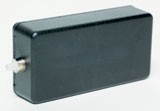 Even if you find a “bug sweeper” with good credentials, certifications and experience, ask them detailed questions. Not just to test them but also for your own peace-of-mind. This makes our job easier and we appreciate greatly when dealing with knowledgeable customers.
Even if you find a “bug sweeper” with good credentials, certifications and experience, ask them detailed questions. Not just to test them but also for your own peace-of-mind. This makes our job easier and we appreciate greatly when dealing with knowledgeable customers.
DPL-Surveillance-Equipment.com is a world leader in providing surveillance and security products and services to Government, Law Enforcement, Private Investigators, small and large companies worldwide. We have one of the largest varieties of state-of-the-art surveillance and counter-surveillance equipment including Biometric Identification Systems, Anti-terrorist-related equipment, Personal Protection (recommended for our female customers) and Bug Detection Products.
Buy, rent or lease the same state-of-the-art surveillance and security equipment Detectives, PI's, the CIA and FBI use. Take back control!

